Chess offers one ultimate consolation in defeat: the opportunity to set the pieces up and start again. At least in theory, a new game is a clean slate, and a release from past tribulations. But in practice, sometimes one simply cannot manage to air out the miasma of what came before.
In the second half of the world championship match held in Dubai last month, Ian Nepomniachtchi was unrecognisable. Magnus Carlsen had landed a devastating blow in the sixth game, in a match hitherto tied at 2.5-2.5. His win, lasting 136 moves and almost eight hours (see my article of 11 December), seemed to utterly demoralise the challenger. A cascade of blunders in subsequent games allowed Carlsen to retain his title with a 7.5-3.5 victory.
A couple of weeks later, right after Christmas, both players were in Warsaw for the world rapid championships. The classical world championship is decided in match play, but the rapid event throws well over a hundred grandmasters into a single event, lasting three days. The four-way tie for first place on 9.5/13 included familiar names Carlsen, Caruana and, to his great credit, Nepomniachtchi, who went through the event without a loss, apparently no longer fazed by his drubbing in Dubai. The fourth name was a revelation: Nodirbek Abdusattorov, just 17 years old. The Uzbek teenager became a grandmaster at age 13, but to triumph among the world elite is a splendid breakthrough. The vagaries of the tiebreak system were widely criticised, but the upshot was that Carlsen and Caruana were excluded from the playoff, from which Abdusattorov emerged as the champion.
It took great imagination to save a precarious position against another talented teenager from India. In the diagram position, Abdusattorov’s knight on d3 is in danger since 23…Nxc5 24 Rc1 wins a piece and 23…Qe4 24 Bxd3 Qxd3+ 25 Qxd3 Rxd3 26 Rxf4 yields an unappetising endgame. Instead, he jettisoned the knight for a dangerous attack, in which the queen’s elegant triangular dance between g2, g7, and b2 was just enough to rescue the draw.
Dommaraju Gukesh–Nodirbek Abdusattorov
World Rapid Championship, Warsaw 2021
1 d4 Nf6 2 c4 e6 3 Nf3 d5 4 Nc3 dxc4 5 e4 b5 A fashionable variation. White’s next move recovers the pawn, but cedes an enduring outpost on d5. 6 e5 Nd5 7 Nxb5 Nb6 8 Be2 Be7 9 Be3 Nc6 10 h4 Bb7 11 h5 Qd7 12 Nc3 Nb4 13 Kf1 O-O-O 14 b3 cxb3 15 axb3 Kb8 16 Na4 N6d5 17 Bd2 g5 A strong advance, as any capture of the pawn opens up a useful file for the Black rooks. 18 Nc5 Bxc5 19 dxc5 Qc6 Setting up the the queen and bishop battery is tempting, but White’s next move threatens Qc1-c4, to embarrass the Nb4. Better was 19…g4 20 Nd4 Nc6! and Black is doing well in the complications after 21 Bb5 Ndb4! 20 Qc1 Nf4 21 Bxf4 If 22 Bxb4 Nxe2 23 Kxe2 Qe4+ recovers the piece. gxf4 22 Rh4 Nd3 23 Qc4 (see diagram) Nxe5 24 Nxe5 Qxg2+ 25 Ke1 Qg1+ 26 Bf1 Rd5 27 Nf3 Qg7 28 Rc1 Rhd8 29 c6 Qb2 30 cxb7 Hard to resist, since it also threatens mate with Qxc7. But the correct way to extinguish the attack was 30 Be2! Ba6 31 Qc2 Now Black forces a draw. Re5+ A clever check, because 31 Nxe5 Qd2 is mate. 31 Be2 Rxe2+ 32 Kf1 Rxf2+ 33 Kg1 Qg7+ This wonderful switchback ditches the rook to save the game. Instead, 33…Rg2+ 34 Kh1 sees Black run out of checks. 34 Kxf2 Qg3+ 35 Ke2 35 Kf1 drops the knight with check. Qg2+ 36 Ke1 Qg3+ Draw agreed
Got something to add? Join the discussion and comment below.
Get 10 issues for just $10
Subscribe to The Spectator Australia today for the next 10 magazine issues, plus full online access, for just $10.
You might disagree with half of it, but you’ll enjoy reading all of it. Try your first month for free, then just $2 a week for the remainder of your first year.

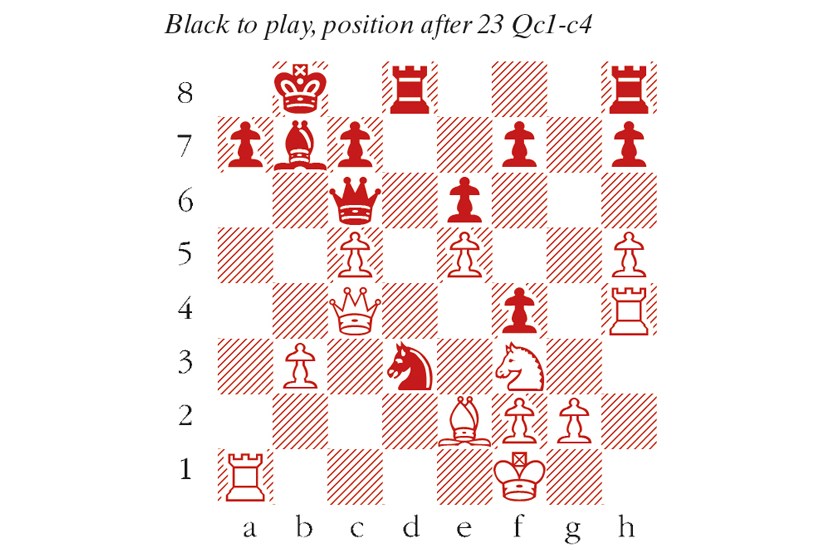
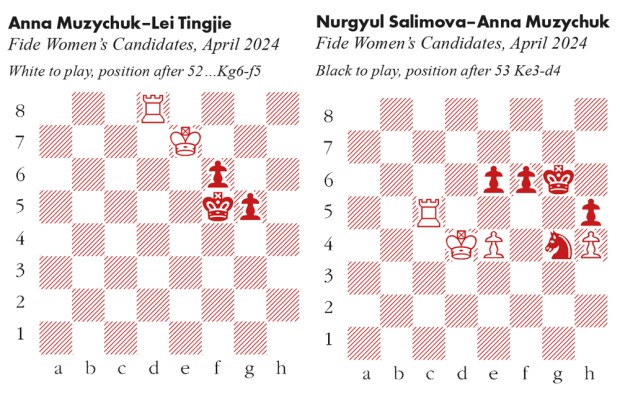
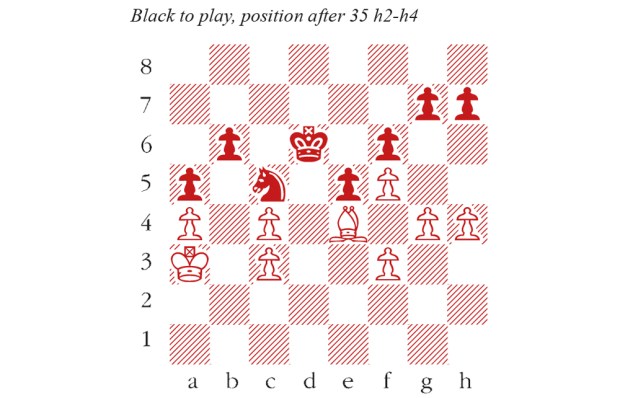
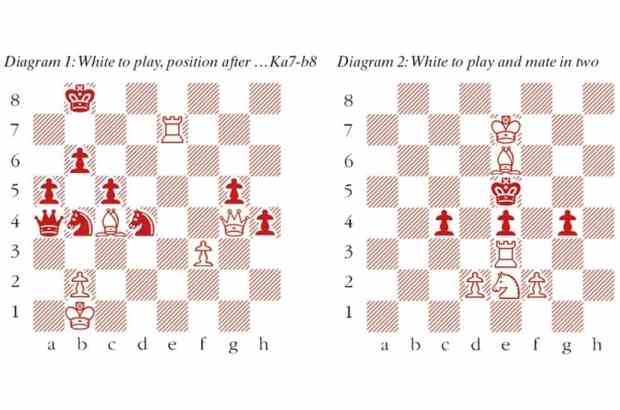
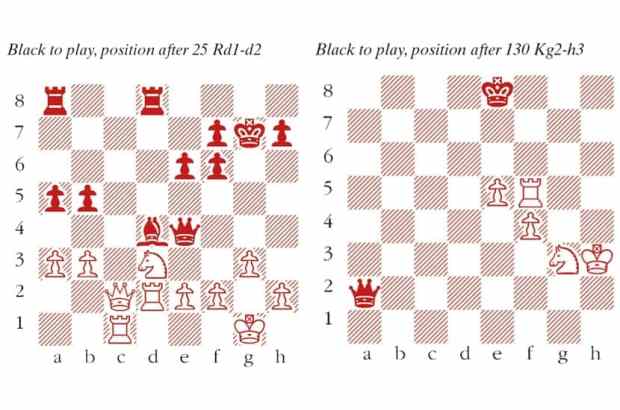
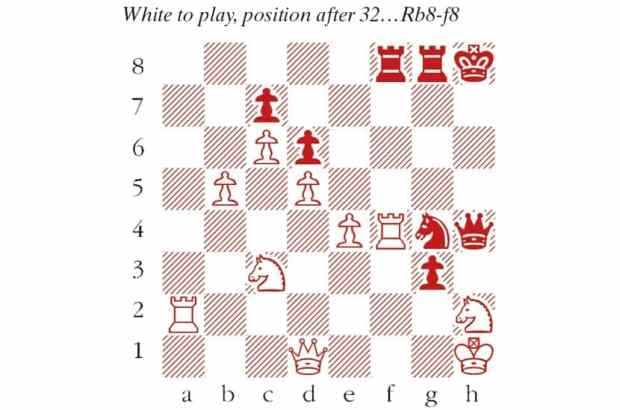
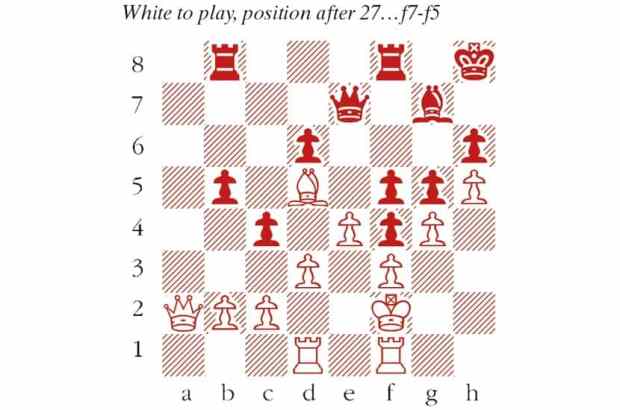






Comments
Don't miss out
Join the conversation with other Spectator Australia readers. Subscribe to leave a comment.
SUBSCRIBEAlready a subscriber? Log in